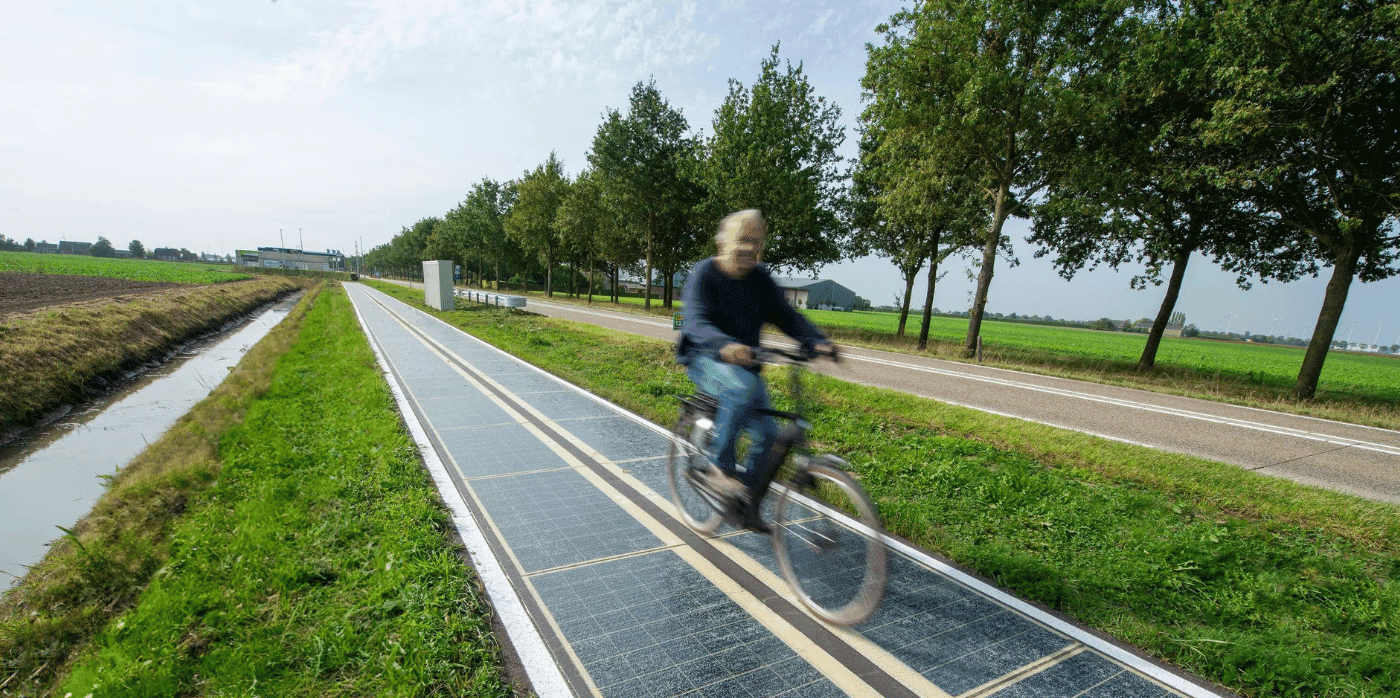
Spotted: In its first meeting, the UK’s Solar Taskforce highlighted the “untapped potential of commercial sites for solar.” What many commercial sites have in common is their provision of walkways and carparks for public use. Those areas, fitted into the space that is available, could be valuable producers of renewable energy, as demonstrated by an innovation created by French infrastructure construction company the Colas Group and INES, the French National Institute of Solar Energy.
The organisations created a subsidiary, Wattway, to market a solar energy system that can be walked, biked, and driven on. Called the Wattway Pack, the turnkey system provides solar panels, an electrical storage cabinet, and a connection to a device needing power.
The photovoltaic road surface requires nothing more than glue to attach it to paved areas, and the surface of the panels is treated with a solution to provide the same grip as a regular road. The Wattway Pack is modular and scalable, with PV panels available in packs of 3, 6, 9, and 12, and produces power ranging from 375 to 1,500 watts depending on the number of panels in use.
In December, a new Wattway project was announced, in collaboration with Dutch construction company Royal BAM Group. There are over 35,000 kilometres of cycle paths across the Netherlands. The two companies hope to take advantage of that, and commissioned two cycle lanes, each 1,000 metres squared, across the North Brabant and North Holland provinces in the Netherlands. The goal is for the paths to generate at least 160 megawatt-hours of electricity for the Dutch grid in the first year, and the project will be overseen for the next five years.
From solar-powered public transport vehicles to off-grid solar systems for disaster relief, Springwise’s library highlights a range of ways in which innovators are scaling down the size of renewable energy systems in order to scale up overall use and electricity production.
Written By: Keely Khoury

